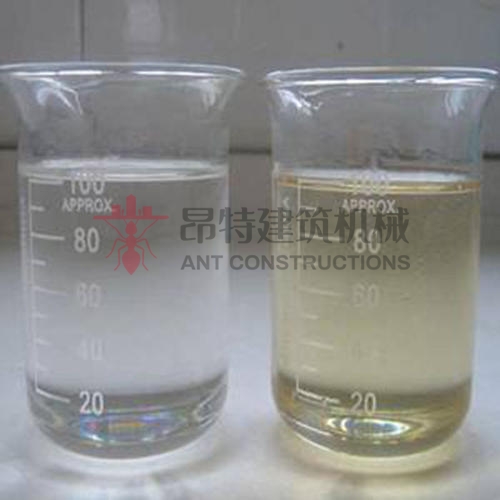plasticizer dioctyl phthalate DOP combine use in thermoplastic paint

Main parameters-plasticizer dioctyl phthalate DOP combine use in thermoplastic paint
Specification | Super Grade | First Grade | Qualified Grade |
|
Colourity(Pt-Co),code No. ≤ | 30 | 40 | 60 |
|
Acidity(calculated as phthalic acid),%≤ | 0.010 | 0.015 | 0.030 |
|
Density(20°C),g/cm3 | 0.985±0.003 |
Purity,% ≥ | 99.5 | 99.0 |
Flash point,°C ≥ | 196 | 192 |
Water content,% ≤ | 0.10 | 0.15 |
Volume resistivity,Ω-cm ≥ | 1.0×109 | / |
General introductions-plasticizer dioctyl phthalate DOP combine use in thermoplastic paint
Dioctyl phthalate, abbreviated as DOP, is mainly used in the processing of polyvinyl chloride, and also in the processing of high polymers such as chemical ground resins, acetate resins, ABS resins and rubbers. It can also be used in paints, dyes, etc. Dispersants, etc., DOP plasticized PVC can be used to make artificial leather, agricultural films, packaging materials, cables, etc.
The function of the plasticizer is to increase the flexibility of the coating film. For some brittle paint base materials, plasticizers are indispensable in order to obtain coating films with better flexibility and other mechanical properties. Plasticizers are usually low molecular weight organic compounds with little volatility, but certain polymer resins can also be used as plasticizers (also known as plasticizers), such as alkyd resins are often used as chlorinated rubber and nitrocellulose Plasticizing resin for coatings. Both plasticizer and plasticized resin must have good compatibility with the plasticized resin
Its plasticizing effect is achieved by reducing the glass transition temperature (Tg) of the base resin. The glass transition temperature (Tg) is the transition temperature at which the resin changes from a hard and brittle solid state (glass state) to a rubbery elastomer state (high elastic state). Plasticizers can generally be divided into two categories. Class is the main plasticizer (solvent plasticizer), and the other is the auxiliary plasticizer (non-solvent plasticizer).
The main plasticizer is like the solvent of the base resin, some of their groups can interact with some of the groups in the resin, so the main plasticizer and the resin can be mixed with each other. Since the plasticizer has a small molecule, it can enter the molecular structure of the resin polymer and reduce the rigidity of the resin, but the addition of the plasticizer will also cause some loss of the mechanical properties of the coating film.
Co-plasticizers have no dissolving effect on the base resin, and they can be miscible with the base resin only when the added amount is not too much. The auxiliary plasticizer has only a physical effect (lubricating effect) on the base resin, so the impact on the mechanical strength of the coating film is not as great as that of the main plasticizer. But the auxiliary plasticizer is easy to migrate or permeate out of the coating film, which makes the flexibility of the coating film poor.
The addition of plasticizers in coatings has certain effects on many properties of the coating film, such as tensile strength, toughness, elongation, permeability and adhesion. Depending on the type of base polymer and plasticizer, the effects on these properties are also different.
Generally speaking, the addition of plasticizers will increase the extensibility of the coating film and reduce its tensile strength. Within a certain amount of plasticizer added, the permeability of the coating film will remain basically unchanged, but when the added amount of plasticizer continues to increase, the permeability of the coating film will increase dramatically. The toughness and adhesion of the coating film first increase with the addition of plasticizers, but gradually decrease after reaching a peak. In addition to affecting the mechanical properties of the coating film, the plasticizer will also affect other properties of the coating film. Therefore, the appropriate amount of plasticizer should be determined after a comprehensive balance based on consideration of various factors.
Applications-plasticizer dioctyl phthalate DOP combine use in thermoplastic paint
It is widely used in the processing of polyvinyl chloride, vinyl chloride copolymer, cellulose resin, and the manufacture of films, artificial leather, wire and cable sheets, plates, molded products, plastisol, etc.
This product can also be used as a softener for synthetic rubber such as nitrile rubber, which can improve the resilience of the product, reduce the compression set, and has no effect on the vulcanization of the rubber.
80%~90% of DOP is used in the PVC industry, and others are used in rubber, recycled plastics, lubricants, adhesives, coatings, polymer additives, softeners for printing inks, capacitor oils, etc., and can also be used in polyvinyl acetate , Polyvinylidene chloride, etc.
Nitrocellulose and other fiber ester and ether coatings
Perchloroethylene and vinyl resin paint
Acrylic resin paint
Chlorinated Rubber Paint







